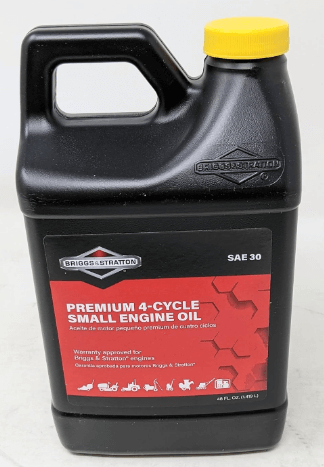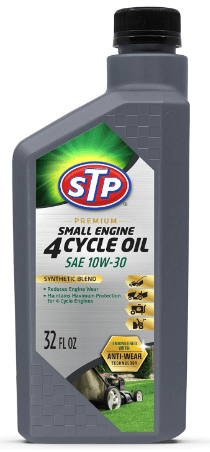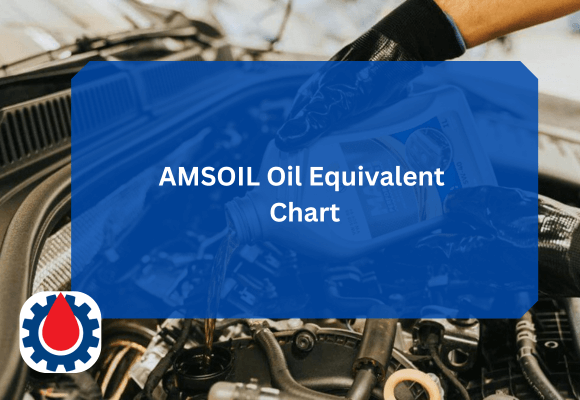Engines are the heart of every machine, and the lifeblood of any engine is its oil. When it comes to four-stroke or 4 cycle engines, choosing the right oil isn’t just a matter of maintenance; it’s critical for performance, durability, and fuel efficiency.
This post explores the fundamentals of 4 cycle engine oil, its purpose, types, key benefits, and how to choose the right oil for your machine. Let’s dive into the nuts and bolts of this essential component in modern engines.
4 Cycle Engine Oil
1. Briggs & Stratton SAE 30W Engine Oil

Description:
A high-quality, specially formulated oil designed for use in small 4-cycle engines, particularly in lawn mowers, tillers, and other outdoor power equipment.
Overview:
This oil provides excellent wear protection and maintains engine cleanliness. It’s ideal for warmer temperatures and helps prevent rust, corrosion, and sludge buildup in small engines.
2. John Deere Turf-Gard SAE 10W-30 Oil

Description:
A premium-grade multi-viscosity engine oil developed for John Deere equipment, suitable for use in a wide range of 4-cycle engines.
Overview:
This oil ensures optimal engine performance across a broad temperature range. It contains advanced additives that protect against engine wear, reduce oxidation, and prevent buildup of harmful deposits.
3. STP Premium Small Engine 4 Cycle Oil Formula, SAE 10W-30

Description:
A specialized formula tailored for 4-cycle engines used in outdoor power tools and equipment like lawnmowers and generators.
Overview:
Infused with anti-wear agents, this oil provides robust protection against engine stress, prolongs engine life, and improves fuel efficiency. It also helps to maintain engine cleanliness and reduce maintenance frequency.
4. Valvoline High Mileage SAE 5W-30 Motor Oil

Description:
A motor oil designed specifically for engines with over 75,000 miles, suitable for 4-cycle engines requiring enhanced protection.
Overview:
It features seal conditioners that rejuvenate aging engine seals, along with detergents that clean the engine. This oil helps reduce oil consumption, minimize leaks, and extend engine lifespan.
5. Briggs & Stratton Vanguard 15W-50 Synthetic Oil

Description:
A synthetic 4-cycle engine oil developed for high-performance and heavy-duty applications, particularly in commercial-grade outdoor power equipment.
Overview:
It offers superior wear protection and thermal stability under high-load and high-temperature conditions. Ideal for extended use, this oil is excellent for generators, pressure washers, and other demanding applications.
Related 2 Cycle Engine Oil Mix Chart(For Perfect Performance)
What Is 4 Cycle Engine Oil?
4 cycle engine oil, also known as four-stroke oil, is specifically designed for engines that operate using the four-stroke combustion cycle, intake, compression, power, and exhaust. These engines are found in most modern vehicles and equipment, including motorcycles, ATVs, lawn equipment, marine engines, and portable generators.
Unlike two-stroke engines, which burn oil mixed with fuel, 4 stroke engines have a separate lubrication system. The oil circulates through the engine to lubricate moving parts, absorb heat, and carry away debris and combustion byproducts.
Key Functions of 4 Cycle Engine Oil
A high-quality 4 cycle engine oil performs several critical roles:
- Lubrication: Reduces friction between moving parts to prevent wear and tear.
- Cooling: Dissipates heat away from engine components.
- Cleaning: Keeps internal components clean by suspending carbon and sludge.
- Protection: Forms a protective film on metal parts to prevent corrosion and rust.
- Sealing: Helps seal microscopic gaps between the piston rings and cylinder wall.
Related Engine Oil Route – How Engine Oil Travels(With Diagram)
Different Types of 4 Cycle Engine Oil
There are several types of 4 cycle engine oil, each suited for different environments, engine types, and performance requirements:
1. Conventional Oil
- Made from refined crude oil.
- Ideal for older or less demanding engines.
- Affordable but requires more frequent changes.
2. Synthetic Oil
- Chemically engineered for superior performance.
- Offers better temperature resistance and longer intervals between oil changes.
- Suitable for high-performance and modern engines.
3. Semi-Synthetic (Synthetic Blend) Oil
- A mix of synthetic and conventional oils.
- Balances cost and performance.
- Good for moderate-duty applications.
4. High-Mileage Oil
- Designed for engines with over 75,000 miles.
- Includes additives that reduce oil consumption and improve seals.
5. Specialty Oils (e.g., Small Engine Oil, Marine Oil)
- Tailored for specific conditions like water exposure or long idle times.
- Often contains additives for rust protection and stability under pressure.
Related Low Engine Oil Pressure(8 Common Causes & Solutions)
Benefits of Using the Right 4 Cycle Engine Oil
Using the right oil isn’t just about engine health; it impacts every aspect of your machine’s function:
- Enhanced Engine Longevity: Reduces internal wear, helping engines last longer.
- Better Fuel Economy: Reduces resistance, allowing the engine to run more efficiently.
- Improved Performance: Ensures consistent power delivery and throttle response.
- Less Maintenance: Slows down the build-up of sludge and deposits.
- Environmental Protection: Reduces emissions by keeping combustion cleaner.
Applications of 4 Cycle Engine Oil
Here’s a list of common machines and tools that rely on 4 cycle engine oil:
Each machine may require a different grade or type of oil. Always refer to the owner’s manual for recommendations.
Related ASM Engine Oil Quick Reference Chart(Complete Guide)
How to Choose the Best 4 Cycle Engine Oil
When selecting the right 4 cycle engine oil, consider the following:
1. Follow Manufacturer Recommendations
Check your owner’s manual to determine the specific viscosity and type required.
2. Consider Operating Conditions
If you use your equipment in extreme cold or hot environments, choose oils rated for those conditions (like 5W-30 for cold climates).
3. Evaluate Engine Age
Older engines may benefit from high-mileage oils with seal conditioners and detergents.
4. Think About Usage Frequency
Heavy-duty or commercial use may call for synthetic or semi-synthetic oils that last longer under stress.
5. Check Certification
Look for oil that meets API (American Petroleum Institute) or ACEA standards. These certifications guarantee performance and safety.
Related Engine Oil With Most Zinc(Top 5 Best 2025)
Changing 4 Cycle Engine Oil
Regular oil changes are crucial to maintaining engine performance. Here’s a basic guide:
- Warm the Engine: Run it for a few minutes to make the oil easier to drain.
- Drain Old Oil: Use the drain plug or tilt method, depending on the design.
- Replace Oil Filter (if applicable): Some 4-stroke engines have replaceable filters.
- Add Fresh Oil: Use a funnel to avoid spills.
- Check the Level: Use the dipstick and ensure the oil level is correct.
Change Frequency: Typically every 25-50 hours of use or once per season for outdoor equipment.
Final Thoughts
Although 4-cycle engine oil may not be glamorous, it plays a pivotal role in the health and performance of your engine. Whether you’re maintaining a weekend lawnmower or a high-performance motorcycle, choosing and using the right oil can make all the difference.
From understanding oil types and viscosity to mastering maintenance schedules and debunking myths, this guide empowers you to keep your engine running stronger, longer, and cleaner.




